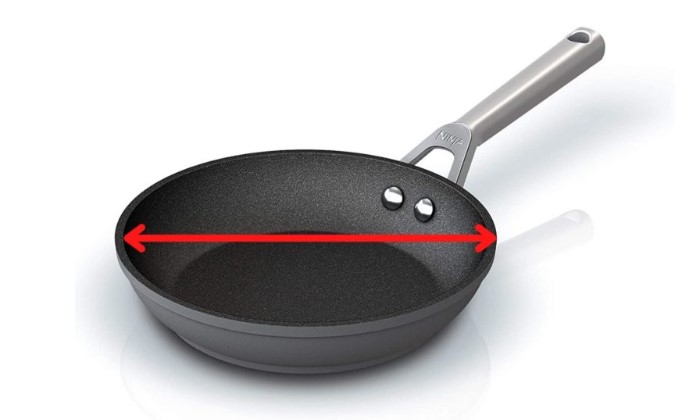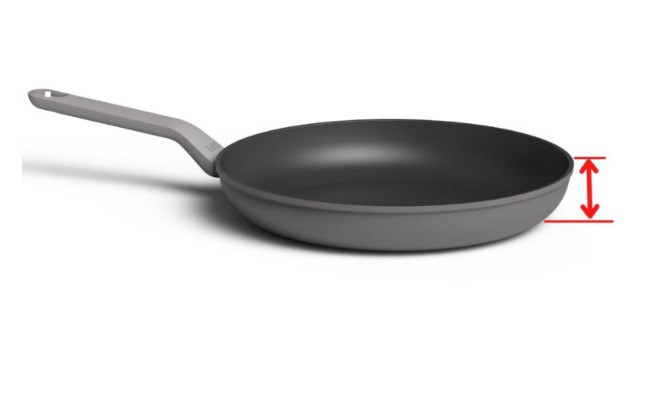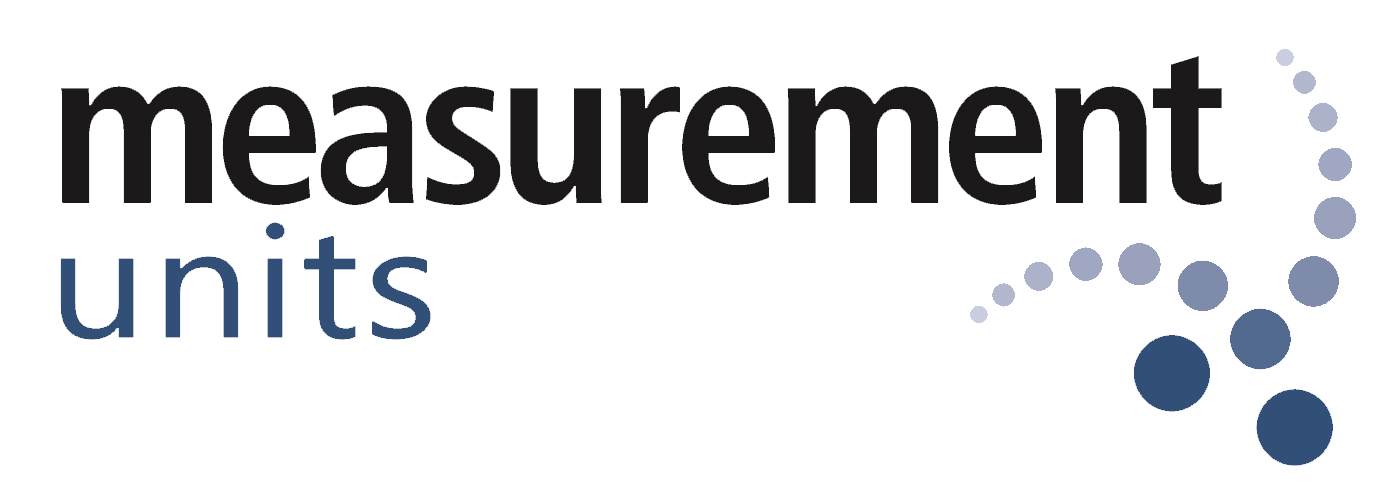Ever wondered why your fried eggs seem to always splatter over the edge of the pan, or why your pancakes never seem to cook evenly? The culprit might be an ill-fitting frying pan. Knowing the size of your pan is crucial for successful cooking, from ensuring even heat distribution to preventing overflow and messy spills.
This guide, specifically tailored for our friends in the UK, will walk you through the simple process of measuring your frying pan and explain why size matters in the kitchen. We’ll also explore some additional tips and considerations to keep in mind.
Why Measure Your Frying Pan?
There are several key benefits to knowing the size of your frying pan:
- Cooking Success: The size of your pan directly impacts how your food cooks. A pan that’s too small will crowd your food, leading to uneven cooking and potential burning. Conversely, a pan that’s too large can leave food feeling dry or greasy due to a lack of concentrated heat.
- Recipe Selection: Many recipes specify the size pan needed for optimal results. Knowing your pan size allows you to choose recipes that are a good fit for your equipment.
- Purchasing Confidence: When buying a new frying pan, knowing the size you need can help you make informed decisions and avoid purchasing a pan that’s too big or too small for your cooking needs.
- Stovetop Compatibility: It’s important to ensure your pan size is compatible with your stovetop burners. A pan that’s too large might not sit securely on the burner, creating an uneven cooking surface and a potential safety hazard.
Understanding Frying Pan Measurements
Explanation of Standard Measurement Units
When it comes to frying pans, two primary measurements are essential: diameter and depth. The diameter refers to the distance across the widest part of the pan, while the depth indicates how deep the pan is from the base to the rim. These measurements are typically expressed in inches or centimeters and are crucial for selecting the right size pan for your cooking needs.
Importance of Knowing Frying Pan Measurements
Accurate measurements are fundamental in cooking for several reasons. Firstly, they ensure that you choose the right size pan for your recipes, preventing overcrowding or underutilization of the cooking surface. Secondly, knowing the dimensions of your frying pan allows you to adjust cooking times and ingredient quantities accordingly, leading to more consistent and flavorful results. Additionally, understanding pan measurements can help you troubleshoot cooking issues such as uneven heating or excessive oil usage.
Overview of Common Measurement Standards in the UK
In the United Kingdom, frying pans are typically measured using the metric system, with dimensions expressed in centimeters. While some pans may also include imperial measurements in inches, it’s essential to familiarize yourself with metric units for consistency and accuracy in your cooking endeavors.
Step-by-Step Guide to Measuring a Frying Pan in the UK
Gather Necessary Tools and Equipment
Before measuring your frying pan, ensure you have the right tools on hand. You will need a tape measure or ruler with clear markings and a sturdy surface to support the pan.
- Tape Measure or Ruler: Choose a tape measure or ruler with clear markings and a length sufficient to measure the diameter and depth of your frying pan accurately.
- Frying Pan: Select the pan you wish to measure, ensuring it is clean and free from any food residue or debris.
Measuring the Diameter of the Frying Pan
The diameter of a frying pan is crucial for determining its cooking capacity and compatibility with recipes that specify pan size. Follow these steps to measure the diameter accurately:
- Place the Frying Pan on a Flat Surface: Ensure the frying pan is positioned securely on a flat and stable surface, such as a kitchen countertop or table.
- Measure Across the Widest Part of the Pan: Take your tape measure or ruler and place it across the widest part of the frying pan. This measurement should be taken from one edge of the pan’s rim to the opposite edge, passing through the center of the pan.

Image source: panmastery
Measuring the Depth of the Frying Pan
The depth of a frying pan determines its capacity for holding ingredients and liquids while cooking. Follow these steps to measure the depth of your frying pan accurately:
- Place the Tape Measure or Ruler Vertically Inside the Pan: Hold your tape measure or ruler vertically and place it inside the frying pan, ensuring it rests flat against the base.
- Measure from the Base to the Rim: With the tape measure or ruler positioned inside the pan, take note of the measurement from the base to the top edge of the rim. This measurement represents the depth of the frying pan.

Image source: panmastery
Recording the Measurements Accurately
Once you have measured both the diameter and depth of your frying pan, it’s essential to record these measurements accurately for future reference. Write down the dimensions in a notebook or save them digitally for easy access when cooking.
- Write Down the Diameter and Depth Measurements: Record the diameter and depth measurements of your frying pan in the appropriate units (e.g., inches, centimeters). Ensure that your recordings are legible and clearly labeled to avoid confusion.
- Ensuring Measurement Units are Consistent: If you measured the diameter in inches, ensure that the depth measurement is also recorded in inches for consistency. Similarly, if you used centimeters for one measurement, stick to centimeters for the other to avoid confusion.

Imsge source: panmastery
Tips for Choosing the Right Size Frying Pan
Considering Cooking Needs and Preferences
When selecting a frying pan, consider your cooking needs, preferences, and the types of dishes you frequently prepare. Whether you’re cooking for a large family or prefer individual portions, choosing the right size pan can make a significant difference in your cooking experience.
Understanding How Pan Size Affects Cooking Performance
The size of your frying pan can impact cooking performance in various ways. Larger pans provide more cooking surface area, making them ideal for preparing larger quantities of food or for dishes that require ample space, such as stir-fries or sautés. Conversely, smaller pans are better suited for individual portions or recipes that require precise temperature control.
Exploring Common Frying Pan Sizes and Their Uses
Frying pans come in a range of sizes to accommodate different cooking needs and preferences. Common sizes include:
- Small (6-8 inches): Ideal for cooking individual portions, such as eggs or pancakes.
- Medium (10-12 inches): Versatile pans suitable for a wide range of dishes, from sautés to stir-fries.
- Large (14-16 inches): Perfect for cooking family-sized meals or large batches of food.
Factors to Consider When Selecting a Frying Pan Size
When choosing a frying pan size, consider the following factors
- Cooking Surface Area: Ensure the pan provides enough space to accommodate your ingredients without overcrowding, which can lead to uneven cooking.
- Storage Space: Consider the available storage space in your kitchen and choose a pan size that fits comfortably in your cabinets or drawers.
- Cooking Method: Different recipes and cooking techniques may require specific pan sizes. For example, shallow pans are ideal for quick sautés, while deeper pans are better suited for dishes with more liquid.
Conclusion
Measuring a frying pan accurately is essential for achieving consistent cooking results and ensuring optimal performance in the kitchen. By following the step-by-step guide outlined in this article, you can confidently measure your frying pan’s diameter and depth, allowing you to select the right size pan for your cooking needs.
Additionally, by considering the tips provided for choosing the right size frying pan, you can enhance your culinary skills and enjoy more satisfying cooking experiences. Remember, precision is key in the kitchen, and knowing the exact measurements of your cookware is the first step towards culinary mastery.
Frequently Asked Questions (FAQs)
To measure the size of a frying pan, you’ll need a tape measure or ruler. Start by placing the pan on a flat surface. Then, measure across the widest part of the pan, typically from one outer edge to the opposite outer edge. This measurement represents the diameter of the frying pan. Additionally, you can measure the depth by placing the tape measure vertically inside the pan, from the base to the rim.
When measuring a frying pan, you typically measure it by its diameter, which is the distance across the widest part of the pan from one outer edge to the opposite outer edge. This measurement includes the entire cooking surface and is commonly used to determine the size of the pan for cooking purposes. However, you may also measure the depth of the pan from the base to the rim to get a comprehensive understanding of its size.
A 28cm frying pan refers to the diameter of the pan, which measures approximately 11 inches in diameter. This size is considered medium to large and is suitable for cooking various dishes, including sautéing vegetables, frying eggs, and searing meats. It offers ample cooking space while still being manageable for everyday use in the kitchen.
The average size of a frying pan can vary depending on factors such as brand, style, and intended use. However, a common size for a standard frying pan is around 10 to 12 inches (25 to 30cm) in diameter. This size provides enough cooking surface area for everyday cooking tasks and is suitable for preparing meals for small to medium-sized families. Additionally, frying pans within this size range are versatile and can be used for a wide range of cooking techniques, from frying and sautéing to searing and braising.
